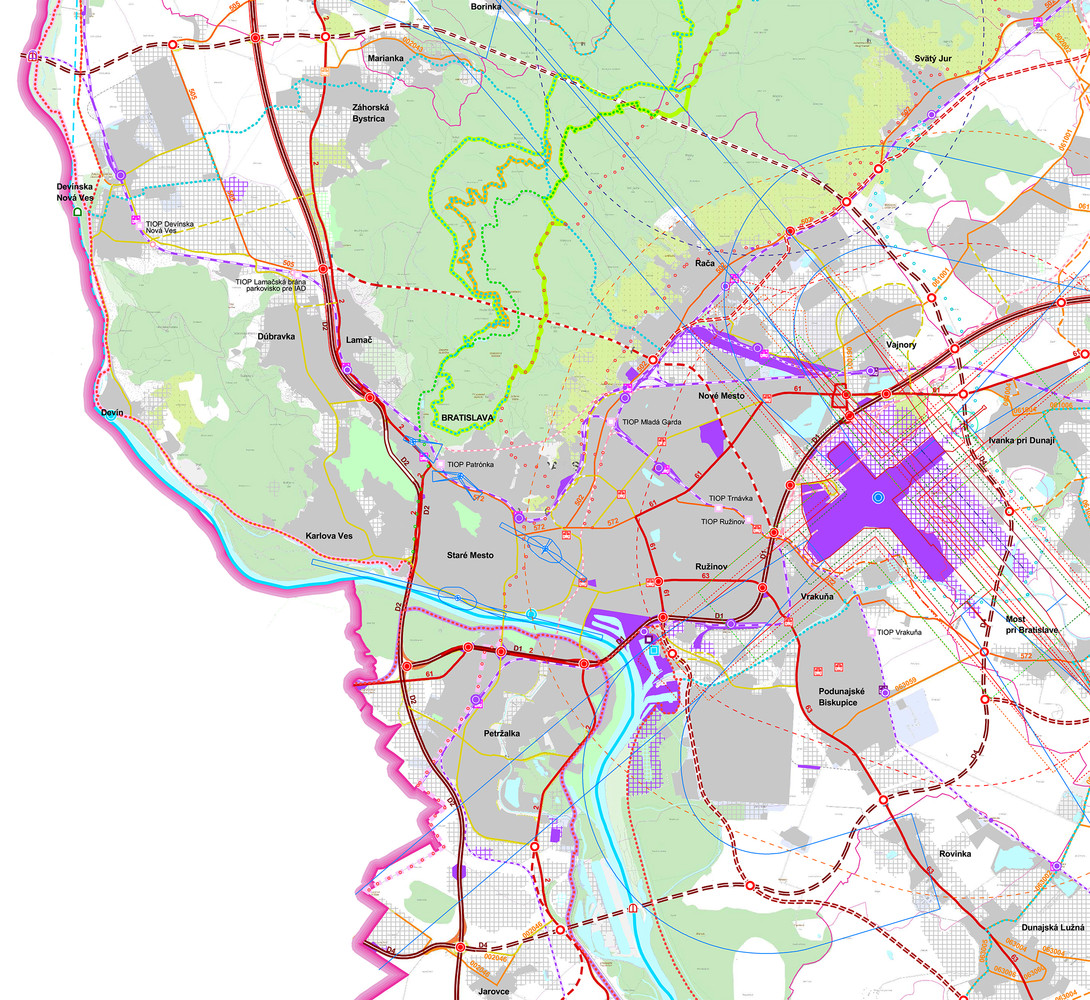Interdisciplinary issues of spatial planning

Spatial planning – most imagine space / interior planning under this term. However, the opposite is true. The spatial planner plans the “exterior”, i.e. zones, municipalities, cities, regions. In layman’s terms, the spatial planner is an expert who ensures that we have a place to live, with all the services, civic amenities, transport or technical infrastructure, greenery, parks and amenities ensuring the quality of life at hand. This broad interdisciplinary issue is understood primarily as sustainable development and management of the territory overseen by civil engineers, traffic engineers, architects, landscape engineers, economists, lawyers, sociologists and many others. In this regard, the spatial planning expert takes on the role of the “mediator” who manages these professionals and inspires them to work together as one team towards the sustainable development of the territory.
In order for planning activities to be described as “spatial planning” they must be integrated into the economic, cultural and environmental policies. Spatial planning with its three pillars:
- spatial planning (it focuses on the future spatial arrangement and functional use of the territory; stands at the beginning of the spatial and construction proceedings, and is therefore one of the most important steps in the process of obtaining a building permit; its tasks and goals will be described in more detail in the next issue of Obecné noviny),
- strategic planning (or strategic socio-economic development plan contains strategic goals as well as the means to achieve them; it is a tool necessary for implementing changes and reaching a consensus; a common vision for further settlement development; contains specific priorities and steps to achieve strategic goals; it sets the direction of the planning process (it does not focus on the plan itself, it is process-oriented); its goals and individual intentions form a basis for the implementation of the plan over given time periods),
- landscape planning (or landscape-ecological planning, according to the Building Act No. 50/1976 Coll., as amended, it is an integral part of surveys and analyzes of spatial planning documentation, as according to the Act it is considered a key design for optimal spatial planning and functional land use with regard to landscape-ecological, cultural-historical and socio-economic conditions, i.e. landscape-ecological plan – this seems to be an ideal spatial planning tool, but even though it is drawn up by an expert, it still serves “only” as a basis for the territorial plan, a mandatory part of surveys and analyzes, i.e. the degree of its incorporation into the final form of documentation depends on the quality of the spatial plan and the approval process), plays an increasingly important role in ensuring the harmonious and sustainable development of society.

Who are spatial planners?
Unfortunately, in Slovakia spatial planning is not a well-known profession. We know who project managers, urban planners, land planners are but we rarely meet a spatial planner. In any case, we, students and graduates of the Department of Spatial Planning at the Institute of Management of the Slovak University of Technology in Bratislava under the leadership of prof. Ing. arch. Maroš Finka, PhD., the director of the Central European Research and Education Center in Spatial Planning – SPECTRA Center of Excellence of the EU, among many other important functions he holds, we analyze the status, properties and values of territorial systems in terms of natural and socioeconomic complexes, development, culture, economy, ecology, economic and social structures, historical structures, aesthetics of the landscape, forms of use and settlement of the landscape. Subsequently, we evaluate these analyzes and use them in our creative planning activities. The spatial planner is also able to identify and evaluate the development potentials of territorial systems at zonal, settlement, regional and national levels, develop strategies as well as operational plans, design and lead the implementation of specific measures and interventions to support sustainable spatial development. Moreover, we also plan, design and manage the comprehensive functional, social, economic and cultural development of territorial units from the point of view of strategic, operational and territorial development plans to ensure their sustainable development while maintaining ecological stability and diversity, increasing the aesthetic value and quality of the environment and ensuring social equality and quality of life. As already mentioned, we also oversee the processes of social participation, we mediate conflicts in the process of spatial development planning, and last but not least, we coordinate territorial management practices.
So how can we understand the spatial development planning system?
The individual integration processes have an economic, political, social and environmental dimension. In this context, we must prioritize the current trends in the global development, including the sustainability of spatial development at all levels, i.e. j. from the zonal, through regional, state to the European level. It is important, even necessary, to guide the development of settlement activities with a clear goal in mind – to coordinate and ensure cooperation of all entities involved in the self-government (municipality, city, region), as well as discuss significant spatial planning at each level in order to ensure effective territorial development. In essence, as has already been clarified, the term spatial planning means complex planning activities related to space – from sectoral, for example in the field of water management, transport engineering, agriculture, energy, etc. to the cross-sectional, with the dominance of strategic and spatial planning, which will be defined in more detail (including new challenges the spatial development faces nowadays) in the next issue of Obecné noviny. The system of spatially relevant planning activities should create conditions for ensuring the harmony of all related activities with emphasis being placed on the quality of life, care for the environment, ecological stability, as well as sustainable development and careful use of natural resources and their protection. From our point of view, every spatial planner – “the placemaker” should aim at creating social values when planning a municipality, city or region. Simply put: to create a space for future as well as also current residents where they will do their favourite activities and feel comfortable. City planning should learn lessons from interior design – everyone should feel at home. As we perceive the world mainly through our senses, it is the environment surrounding us that makes us feel comfortable. A Danish architect and urban planner Jan Gehl remarked that: “The city should be people-oriented”.

